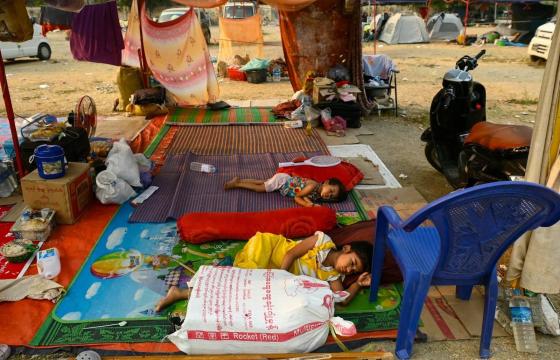A widely held perspective, and what can be called the conventional understanding is that the debate on federalism in Myanmar is closely linked to the peace process and political dialogue. However, there is an increasing realization that addressing federalism ought be a means to achieve peace and stability in the country.
Central to the debate is also Schedule 2 of the 2008 Constitution, which has in fact carved out some powers and responsibilities to the fledgling State and Regional governments. Many however feel this arrangement is not sufficient or adequate. From this vantage, Myanmar’s future in terms of achieving national reconciliation, peace, and stability critically hinges on the shaping of the State and Regional governments as foundational steps towards a federal system.
A timely research publication titled “ Schedule Two of the 2008 Constitution: Avenues for Reform and Decentralization and Steps Towards A Federal System” from Konrad Adenauer Stiftung (KAS), which was released at Yangon on the 3 May 2018 identifies the road map for decentralization (and steps towards federalism) through amendments to the Schedule 2 of the Constitution. This process is seen as one of the possibilities in the complex process of power sharing between democratic forces, the military and ethnic nationalities.
The authors of this brief policy paper argues that while federalism (or establishing a federal structure) is seen as part of the negotiations under 21st Century Panglong peace process with NCA signatories, there are parallel federal governance practices underway with the establishment of state and regional parliaments, ministries and identification of areas of responsibilities that these sub-national level governments can handle. These two parallel processes which have the same goals and have to be merged at some point in the future. It is in this context amendment of Schedule 2 of the 2008 Constitution becomes relevant, particularly as Daw Aung San Suu Kyi in her speech of Oct 2015 also refers to the amendment to Tables (schedules 1,2, 3 and 5) as the agenda of the government.
To a certain degree, amendment to the schedule 2 is seen as a process of promotion of decentralization where in government apparatus reaches to the people.
The authors through their persuasive analysis come to the conclusion that there is an all round consensus on amendment to the Schedule 2 of the Constitution so that more decentralization can be practiced. However, some analysts point out that decentralization is a second best alternative to federalism. For them Federalism, seen from a wider context, relates to issues of ethnic identity and sharing of power without diluting the national sovereignty. This is precisely the approach that NCA and peace process is taking. The authors point out the convergence of views; that of those who advocate federalism in the peace process and those who advocate amendments to the schedule 2 of the constitution. However, there is yet another, perhaps an idealistic view, of working towards a new constitution and not settling with amendments to 2008 constitution. Such a perspective may be missing the ground reality that most political apparatus is currently gravitating towards a moderation of working within the framework of 2008 Constitution.
From the perspective of ushering in more decentralized governance, it is important to adhere to the principle of subsidiarity. Clear demarcation of powers and responsibilities with devolution of functions, functionaries, and finances are sine qua non for such an arrangement. This requires change in attitudes, perceptions, and work culture of the current system which is perceived as top-down. Letting go of the existing powers is always a painful and difficult task; yet it has to be accomplished.
What are the areas that need attention in terms of amendment to Schedule 2? What would be the complimentary changes required? Authors of this policy paper identify a road map for such amendments and complimentary steps.
The necessary changes in the formation and composition of State and Regional ministries, reforms in the general administration and promotion of local governance practices, decentralization of justice system, division of powers on various economic sectors and revenue generation capacities at the state and regional level. All these require appropriate mechanisms in the form of amendments or enactment of model laws at the union level or formulation of clear rules and regulations. At the same time, capacity gaps at the state and regional level also need to be addressed, as that would become an impediment in discharging responsibilities at the sub-national level. These are some of the issues that the research paper highlights for the attention of policy makers.
In all, it’s a timely policy paper that enables conversations on the 2008 Constitution and enhances our understanding of constitutional, political and power dynamics of Myanmar.








